Cooking for Homeschooling
Due to the Covid-19 pandemic, schools in Hong Kong had to close for extended periods. To support parents in the new homeschooling teaching format, our group sought to explore the possibility of cooking as an extracurricular teaching activity.
We designed a parent-children cooking workshop with a simple recipe of tart dessert in the form of a cartoon handbook to enhance children’s mathematical concepts and cultivate learning ability and creativity.
Team Project | 2020.10-12
#ReflectiveDesign #Experience #DesignResearch #Prototyping
Research Process Overview
Research Questions
Research Process
Secondary Research
Local News & Documentary
1. Syllabus Designed for the Children
Some of the homeschooling parents design teaching content based on their children’s learning abilities, interests, and speed. It is better for children to digest, especially abstract knowledge, in a tailored teaching syllabus. Homeschooling parents also integrated daily lives into teaching materials.
2. Possibility of Group Learning
Homeschooling parents in HK not only educate their children at home but also organized entertaining homeschooling activities with the other families through their social network. Facilitated by online social networks, homeschooling parents shared their teaching experience and materials as well.
3. The Relaxed Atmosphere of Learning
The homeschooling atmosphere also allows children to have enough space to learn through practice, trial and error, and communication with peers. It also avoids the problem of children feeling stressed in traditional classroom learning, a lot of homework and tests, and being unable to keep up with the teaching progress.
4. Pain Point of Homeschooling
Homeschooling however required enormous time and effort for parents to study or design all those teaching syllabi and materials before teaching the children. Some Hong Kong parents without homeschooling experience had no ideas on how to homeschool during the Covid-19 pandemic and hoped someone would give them a hand.
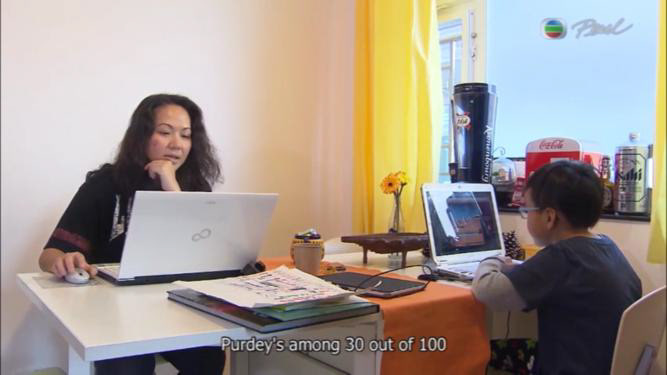
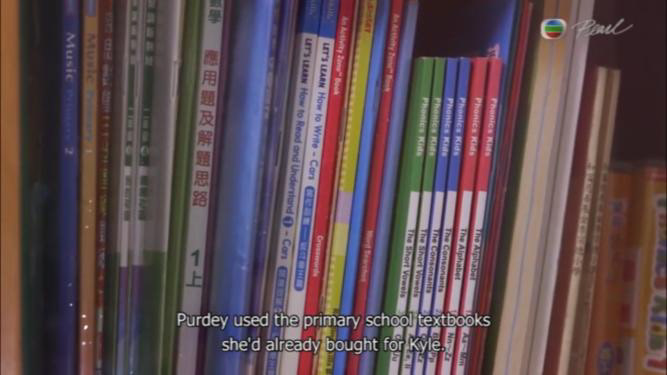
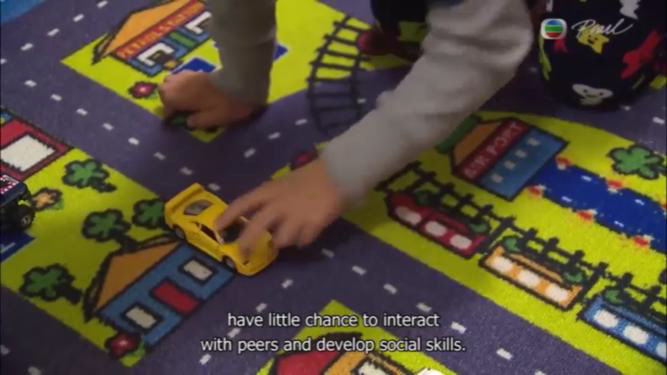
TVB's documentary about homeschooling in Hong Kong
Literature
1. Meaningful Learning in Cultural Practices
Following Leont’ev (1975), learning is meaningful and promotes individual development when involving both cultural and personal dimensional sense at the same time. In addition to using schools for explicitly educational purposes, learning can also be conducted in real or simulated forms related to social roles (such as shopkeepers, doctors, etc).
2. The Ability of Problem-solving
Children’s mathematical learning is related to using innovative tools (such as concepts) or the improved use of existing tools to address problems or accomplish tasks in the activities. It is an essential part of work-related skills that can improve a child’s ability to be independent, cooperative, responsible, and self-regulated (Cooper and Farran, 1991).
3. Mathematical Communication
Learning is closely related to communication. The mathematical thinking developing process is mainly constructing useful patterns for transforming mathematical concepts and facts (such as numbers, relationships, and functions) into language, text, and graphics to communicate mathematically with others.
4. Symbolic Representations
Children’s behaviors of making marks are often discounted as “just scribbling” (McClelland, 2000), thus many opportunities to promote mathematical thinking development are neglected. Previous studies have revealed that playful exploration of schematizing abilities is a vital prerequisite for early mathematics learning.
Initial Design Ideas
What should our project consider? We have developed some rules to design and diverge some ideas after the secondary research as illustrated below. These ideas have guided us in the direction of primary research.
Research Gap and Question
The local news and documentaries commonly reported the benefits and methods of homeschooling, where literature studied key points of children’s mathematical learning. Relevant cases and literature providing theories and strategies about combining cooking activities and primary mathematical education have lacked. Few researchers studied how to design cooking-math workshops or textbooks for children who were six to nine and the role of parents in that process.
In this project, we focus on combining cooking activities and primary mathematical learning in an experience for Hong Kong parents and their children. The second design question that we sought to answer through our research was “How can we design parent-child participation cooking workshops enhancing mathematical learning?”
Divergence of research questions
Primary Research
Interview
We recruited two kinds of participants: three teachers and five parents. Two of the teachers were primary school Mathematics teachers and one of them was a secondary school design teacher. As for parents, both homeschooling experts and those inexperienced were interviewed.
The demographics of parents interviewees
After the first round of interviews, we generated insights, and six constraints were identified for the next design step based on the similarities and difficulties of the interviewees’ answers to the same questions:
1. The Activity-based Learning Mode
Games, role-play, and activities around cooking like shopping at supermarkets or decorating their desserts should be adopted as teaching methods.
2. Intrinsic Motivations
Children’s intrinsic motivations, interest stimulation, curiosity, sense of achievement, and personalization should be paid attention to.
3. Various Concepts and Knowledge Point
Concepts and knowledge that are more relevant to the cooking process rather than limited to one syllabus of a specific grade should be included.
4. Real-life Context
Real-life mathematical concepts of unit conversion, money, budget, and time more than explicit mathematical knowledge should be included.
5. Interactive Recipe
An interactive recipe is a more appropriate form of deliverable for it allows children to learn through the cooking process instead of the dish’s outcome.
6. Adequate Space for Creation
Our design should have sufficient space to cultivate children’s curiosity and creativity. We also found out that children adore sweets, and thus provided a direction for the first recipe.
Home Observation
We asked three families with children to take pictures of their kitchen and the largest table in the flat to evaluate a Hong Kong household’s constraints.
We observed that most households possessed an oven, at least a small one, which indicated that it was feasible to use baked dishes such as cakes and desserts as the recipe’s primary food. We also had to pay attention to the size of the finished food. The kitchen space in Hong Kong households was limited to implementing parent-child participation in cooking and teaching activities. Therefore, the workshop should instead be held outside the kitchen on the dining table, adequate for families to carry out the workshop from the pictures received.
Pre-prototyping Interview
To tailor a cooking activity for our testing family, the mother of the family we invited in the prototyping stage was interviewed before designing learning materials.
The participant is a working mother with two children, a 10-year-old boy, and a 6-year-old girl. She only had time to homeschool her children on weekends, and she had no confidence in homeschooling for lacking experience.
The participant and her children never tried interactive materials or cooking workshops combined with Mathematics learning before. The interest and willingness for trying were expressed, and she agreed that homeschooling should be a means of extracurricular activity but not to replace the traditional school.
The family recruited for testing
Ideation
Concept
Our design concept was a simple recipe of tart dessert with four essential guidelines:
1. The cooking handbook for children should be colorful, attractive, and storytelling for children to be attracted and willing to follow.
2. There should be a space for children to contribute to the recipe, e.g., choose their favorite flavor, create different toppings and shapes, etc.
3. The workshop should conclude multiple mathematical concepts combined with cooking procedures and real-life context.
4. Clear guidelines, including the parent’s role, recommendations, and tips in the parent’s version, should be provided.
Research Through Design on Recipe
We started with research on western desserts based on the insights from our previous interviews that sweet dishes, such as cookies, cakes, and tarts were loved by children. There were also easy to cook and required more attention to the amount of ingredients. We found that there are lots of procedures that could be tailor-made by baking a cake or a tart. There were many varieties as well, for example, the shape of the desert, and the combination of ingredients.
Secondary research on recipes
After narrowing down the choice of cakes and tarts, we invite and sound out our potential testing families. These items below were realized to be what the parents mostly worried about: the workload of the parents, the safety issue of essential cooking methods, cost of ingredients, and cooking duration.
Tarts were selected for their ability in modularising, sweet flavor, short cooking time, and limited cost. Choices of toppings and pastes were brainstormed with constraints of whether the combination could be achievable by children, done within two hours, and allowed space for creativity. A recipe of single pie pastry and four different paste choices of chocolate paste, lemon curd, custard, and pistachio paste was formulated.
Flow and Error Analysis
Research Through Design on a Cooking Booklet and Instruction Slides
The cooking booklet had been designed by considering the workshop flow and learning purpose and reviewing existing children’s educational materials. Some critical points were identified during our design process:
1. Story-telling method
Recipe and mathematics worksheets bored the children. We included a story in the teaching material to increase the interest and distinctiveness of our workshop. Common characteristics of popular children’s books were discovered from our research:
1. First-person perspective;
2. Personified animal as the main character;
3. Reader and the main character were friends and complete a mission together;
4. The sentences should be short and easy to read.
2. Personified animal as the main character;
3. Reader and the main character were friends and complete a mission together;
4. The sentences should be short and easy to read.
Secondary research on children's books
3. Focus on common errors and misconceptions in mathematical knowledge
We found ourselves and group members making mistakes in mathematical problems while designing due to misconceptions, for example, the addends of three digits, the weight of water, the conversion of gram and millimeters, etc. To avoid the children falling into the same trap, we added these misconceptions into our booklet and made their tasks.
Prototyping and Testing
Deliverables
Our deliverables contained a cooking booklet for children and instruction slides for parents. The booklet was intended to engage children in the cooking and learning process by attractive colors, animal characters, and storytelling, where children could get familiar with the recipe, learn mathematics knowledge, as well as fill blanks of mathematical questions, shopping plans, and creative design of tarts.
The instruction slides for parents mainly introduced the workshop, aim, target audience, time requirement, procedures, and learning focus (mathematical operations and concepts, reading and comprehension, self-learning, problem-solving).
The storytelling cooking handbook for children - “Little Mouse, the Foodie” with 26 pages, making fruit tart through the application of mathematical facts and concepts.
Cooking Workshop Testing
Part 1: Filling in the workbook, getting familiar with the recipe and utensils
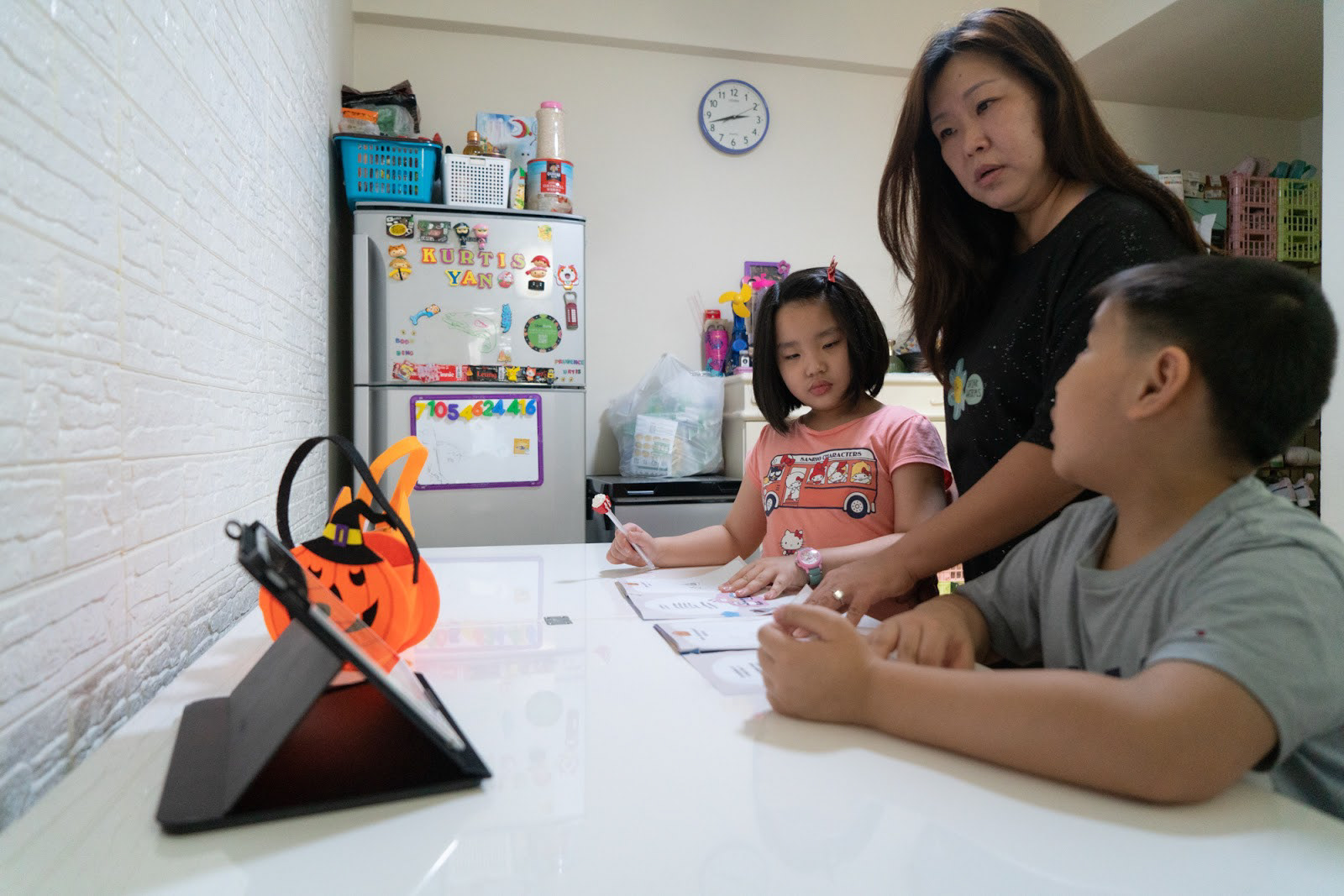
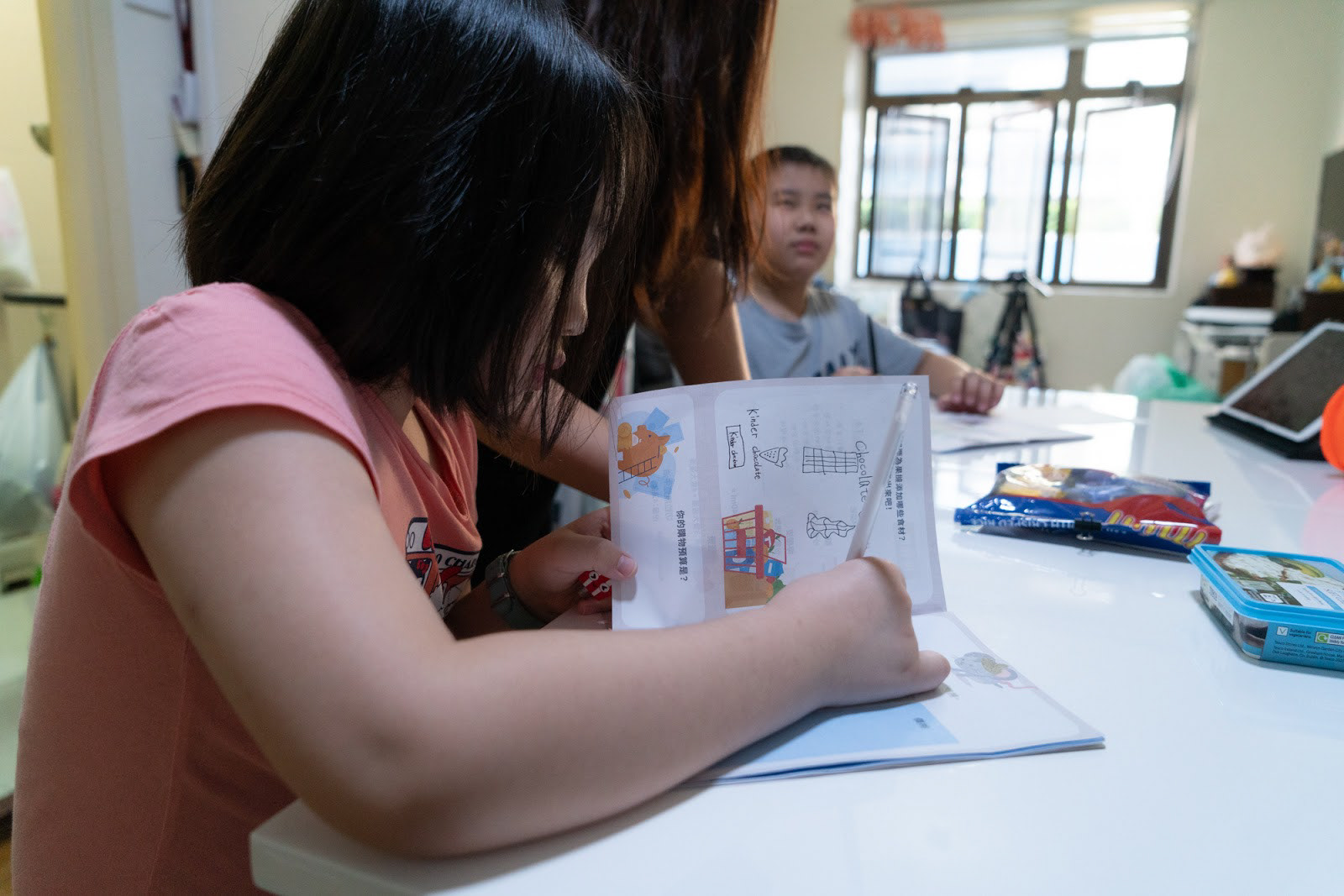
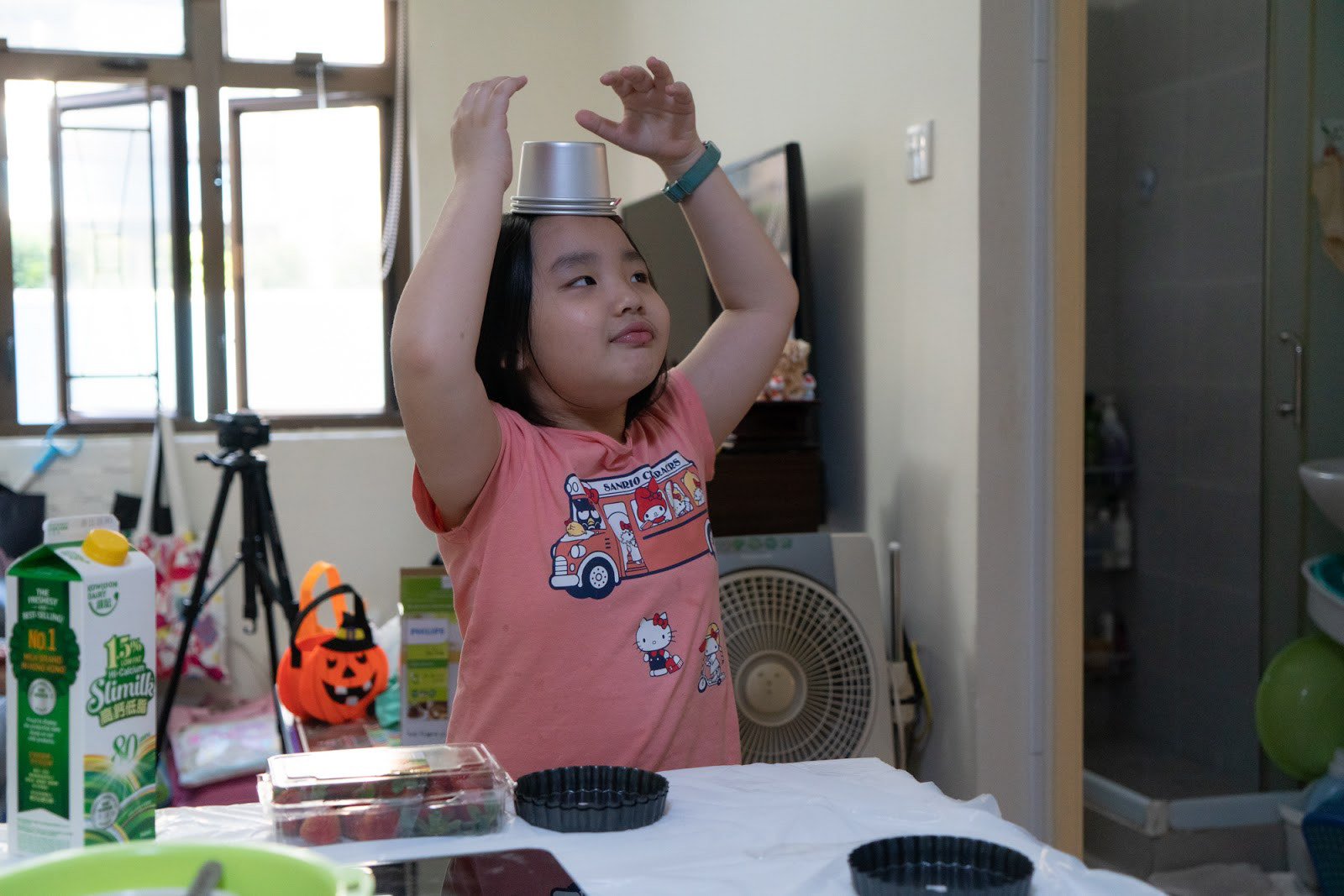
Part 2: Shopping ingredients, making the tart pastry
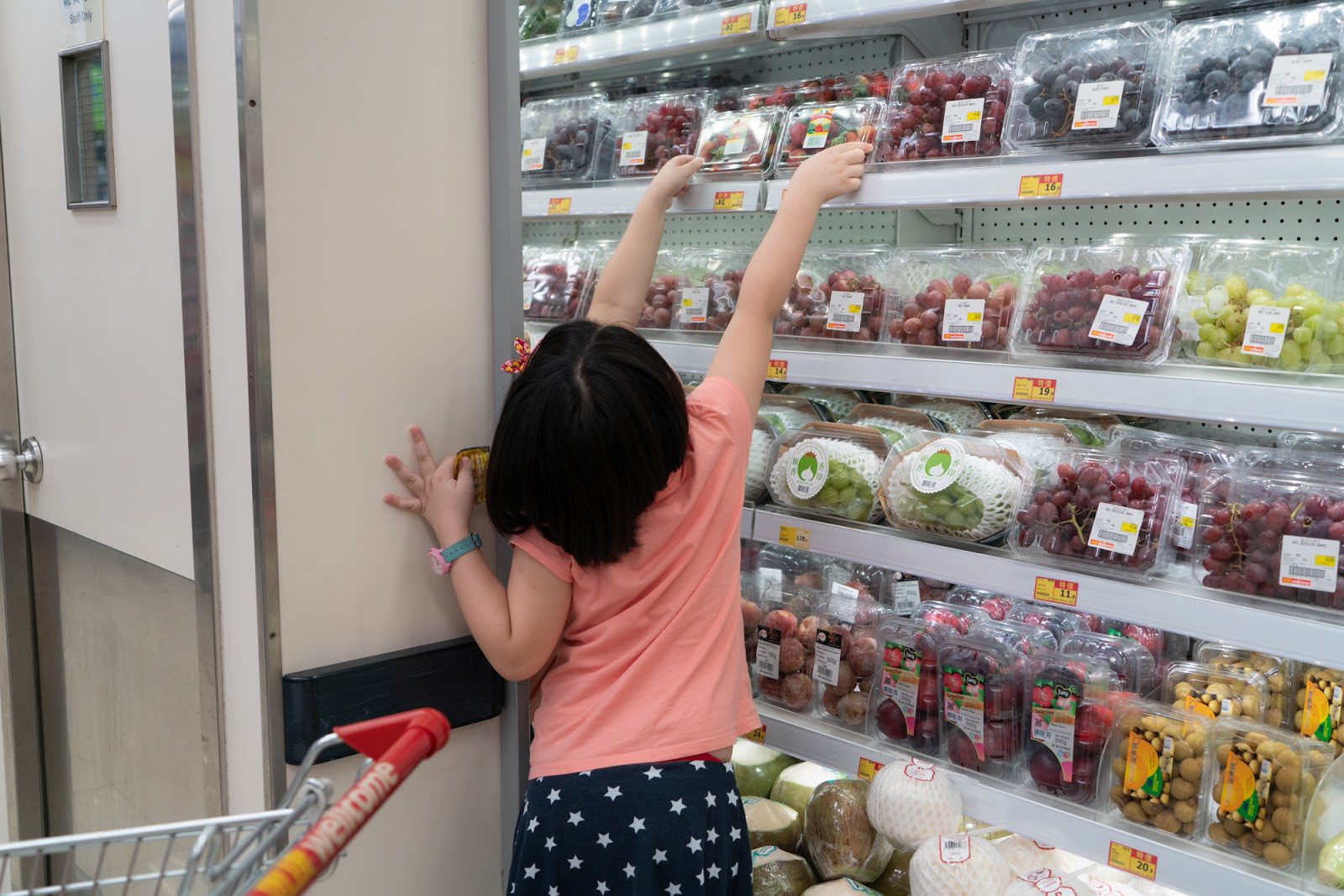
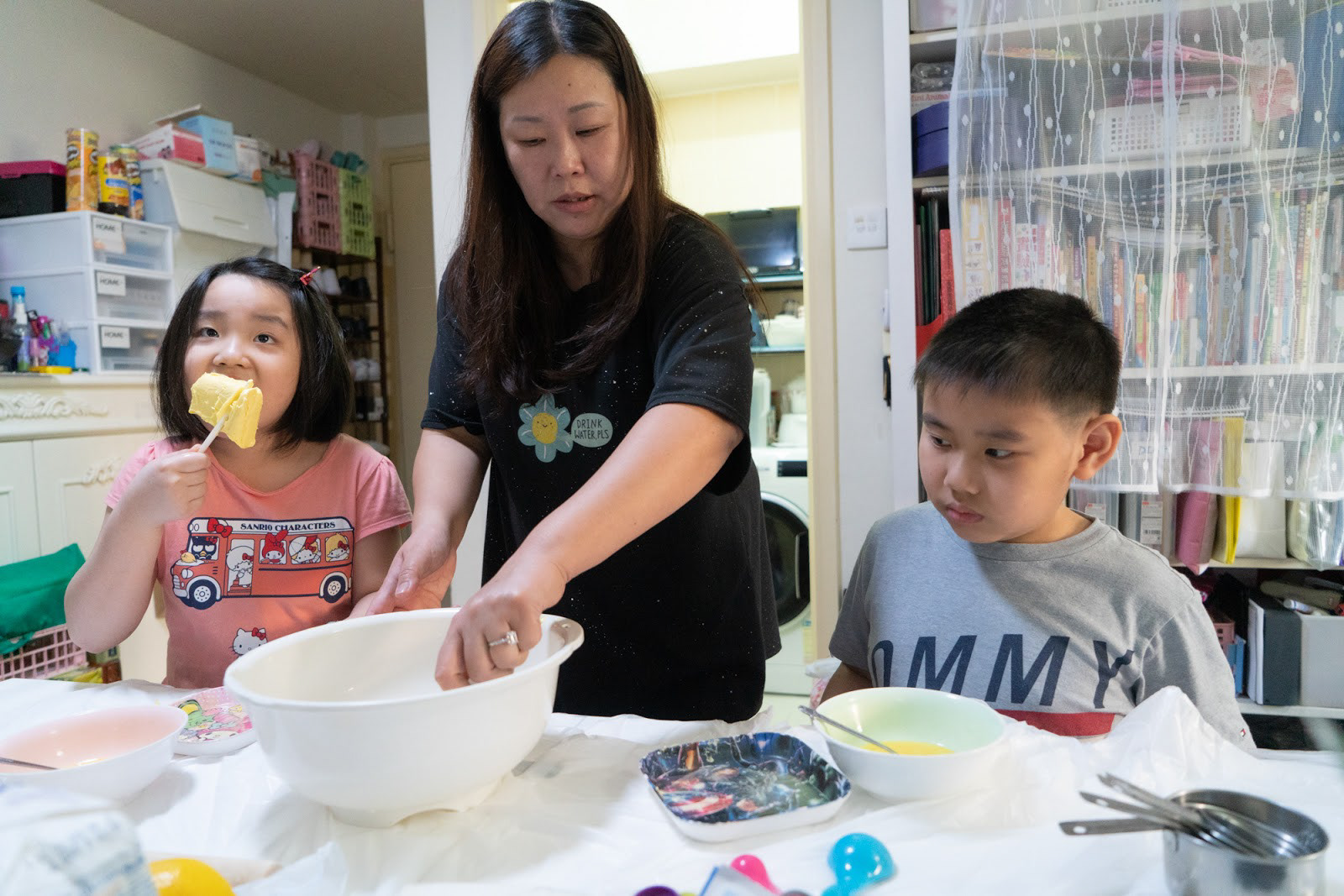
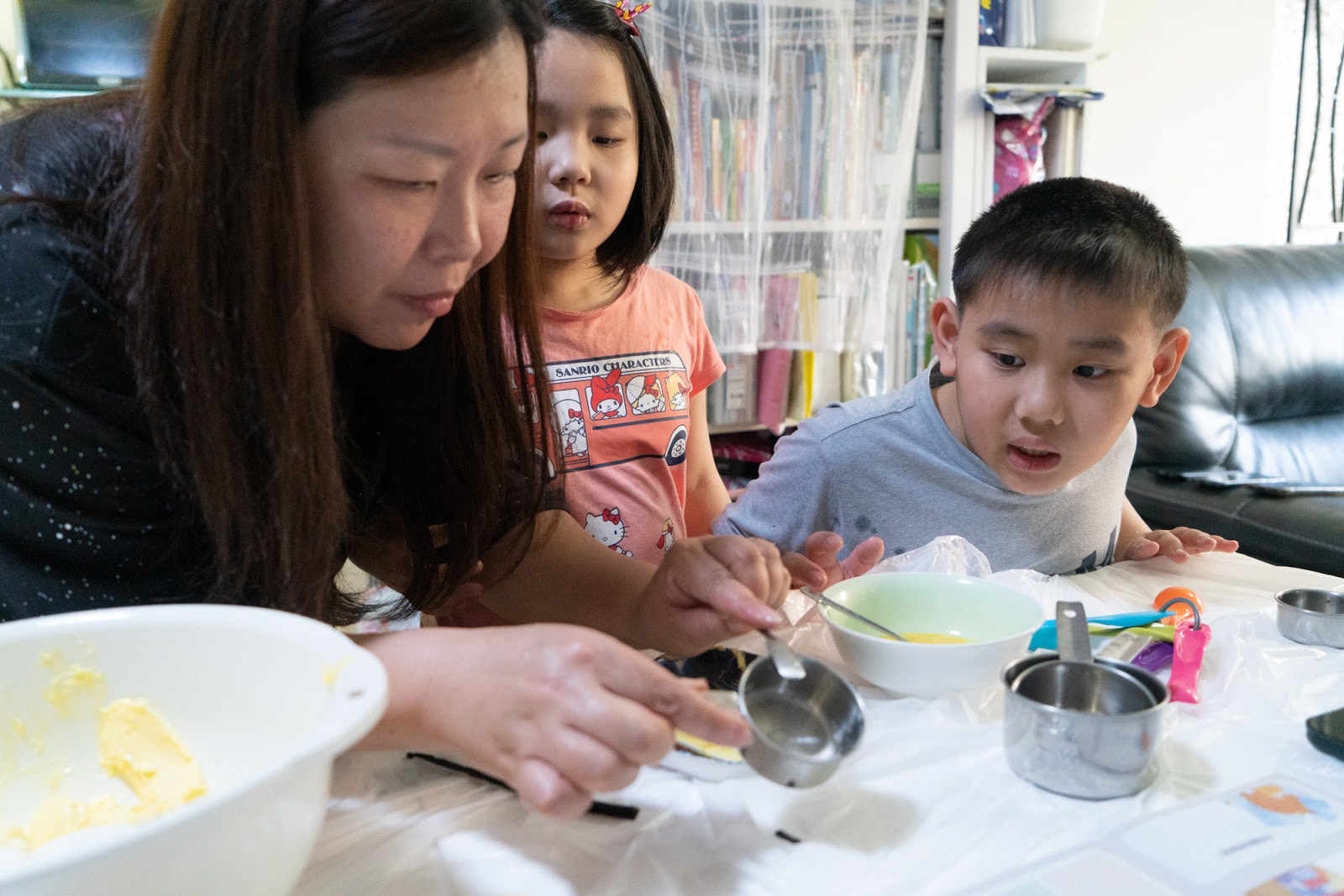
Part 3: Making chocolate mousse
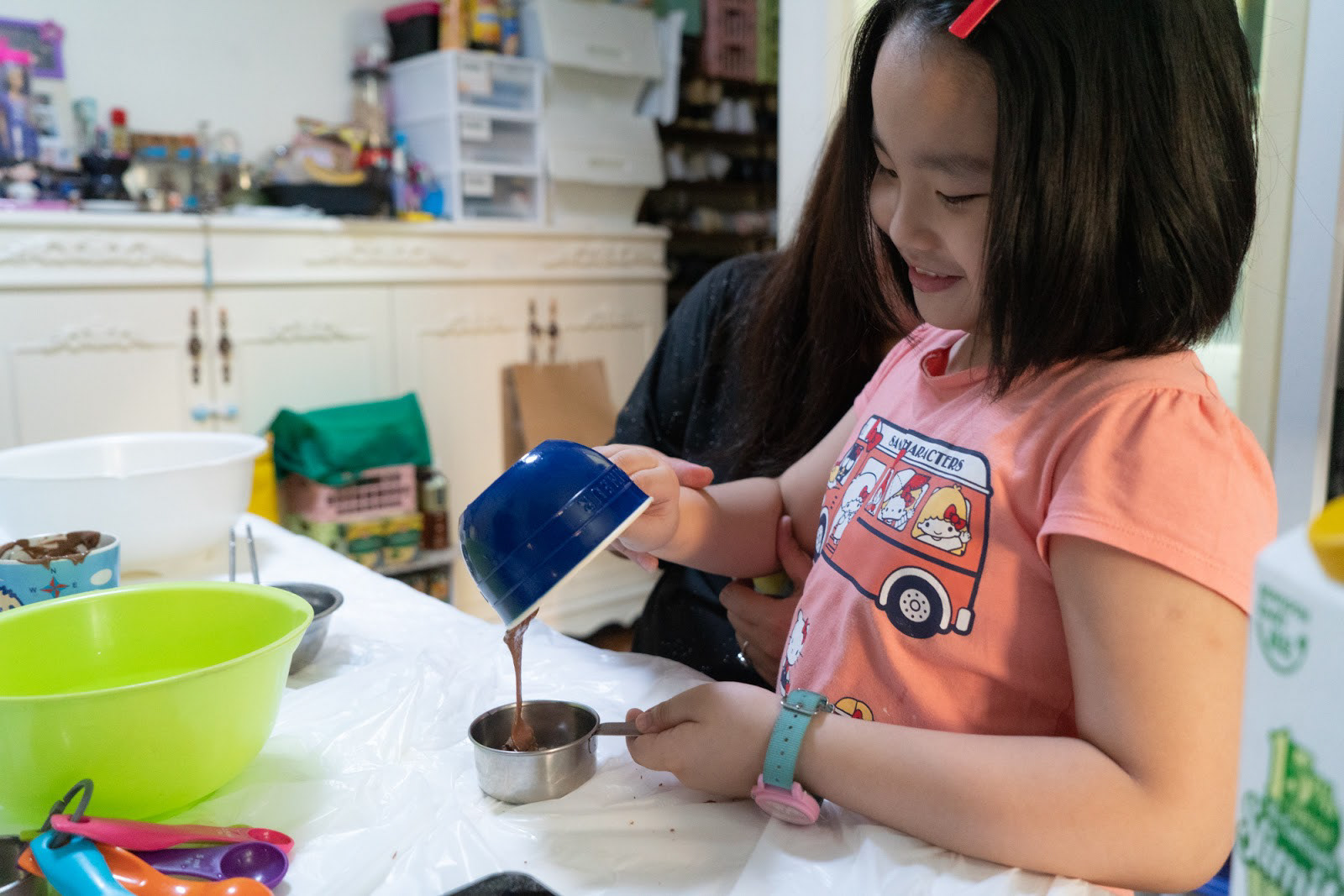
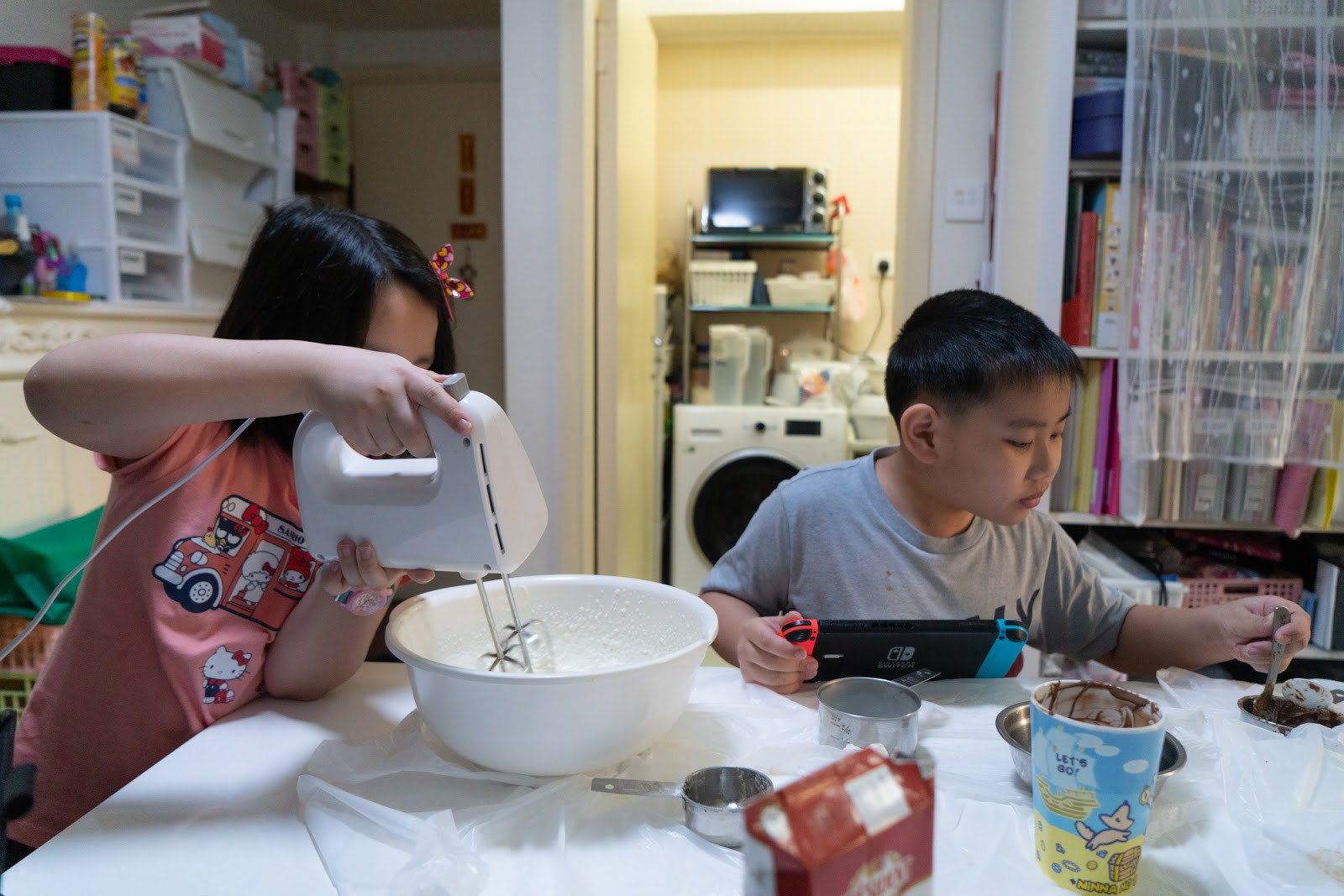
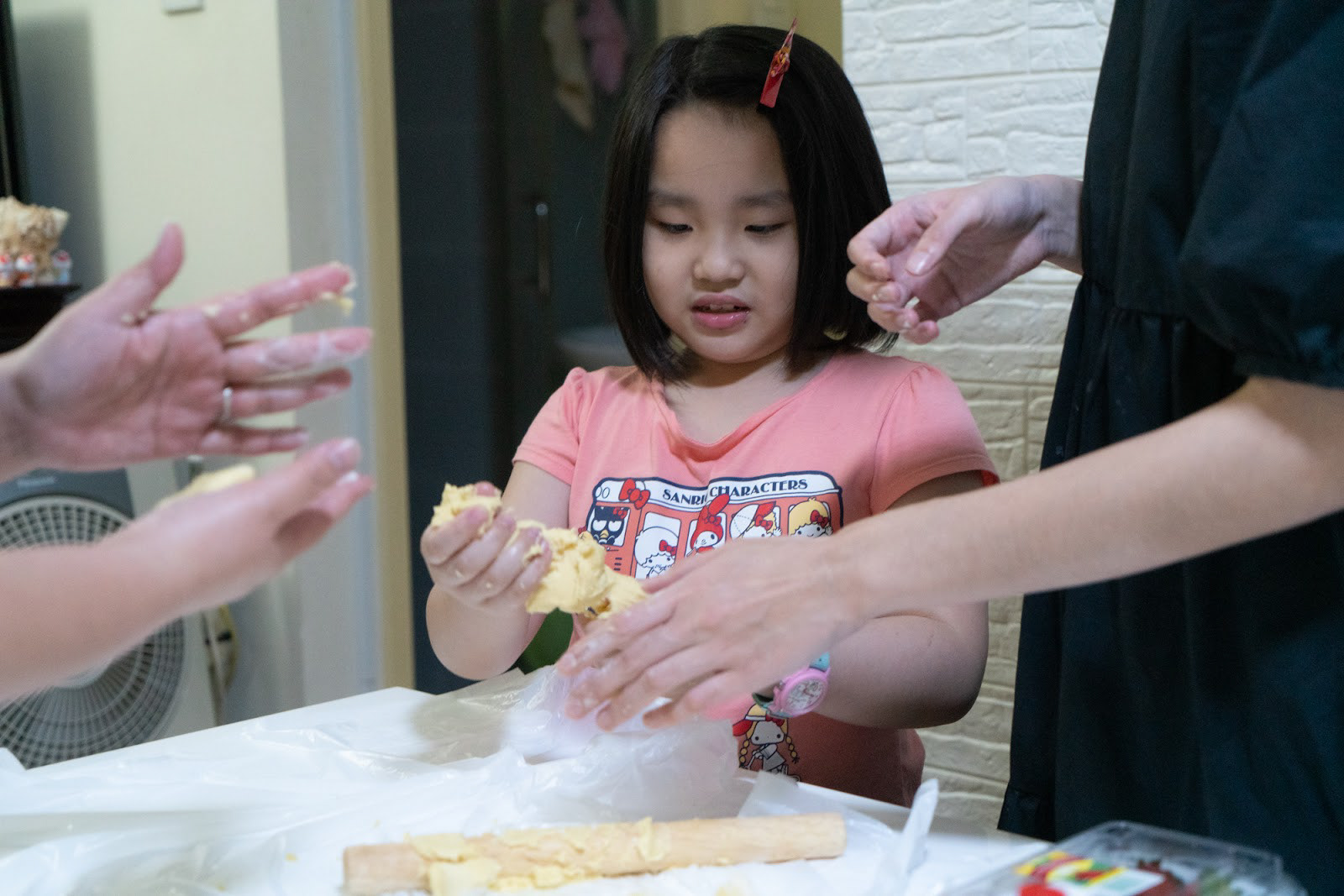
Part 4: Baking and decorating the pastry
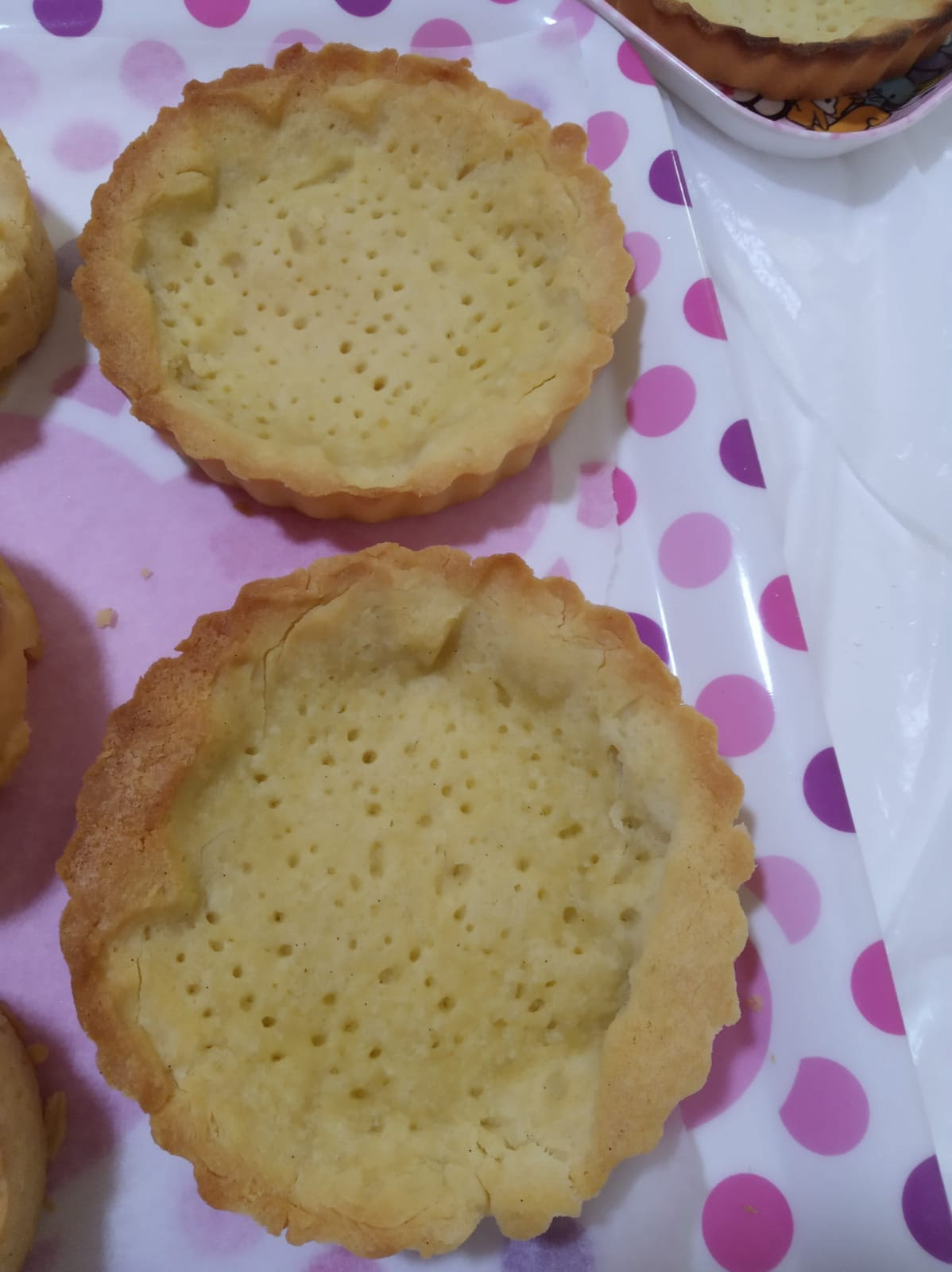
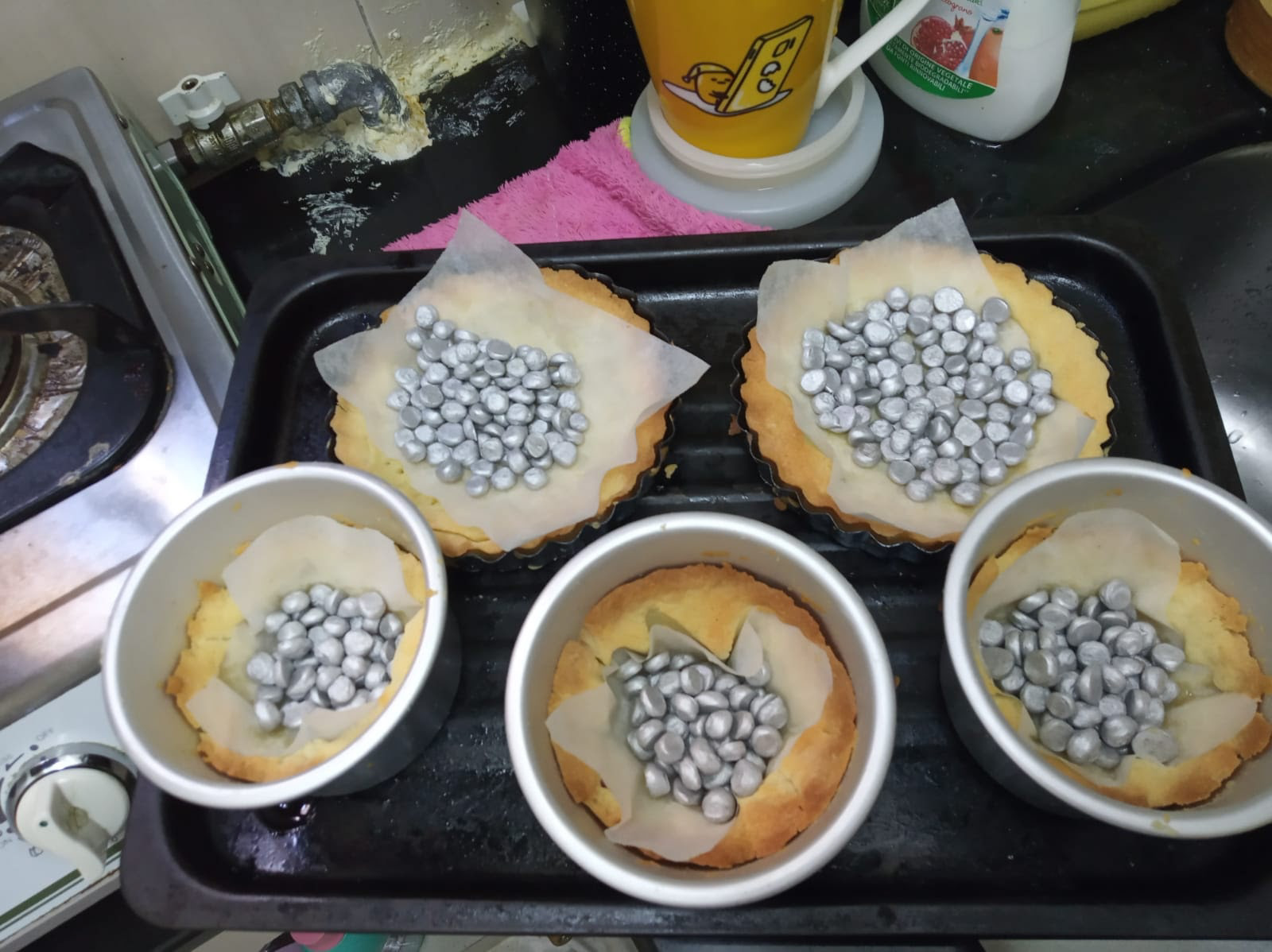
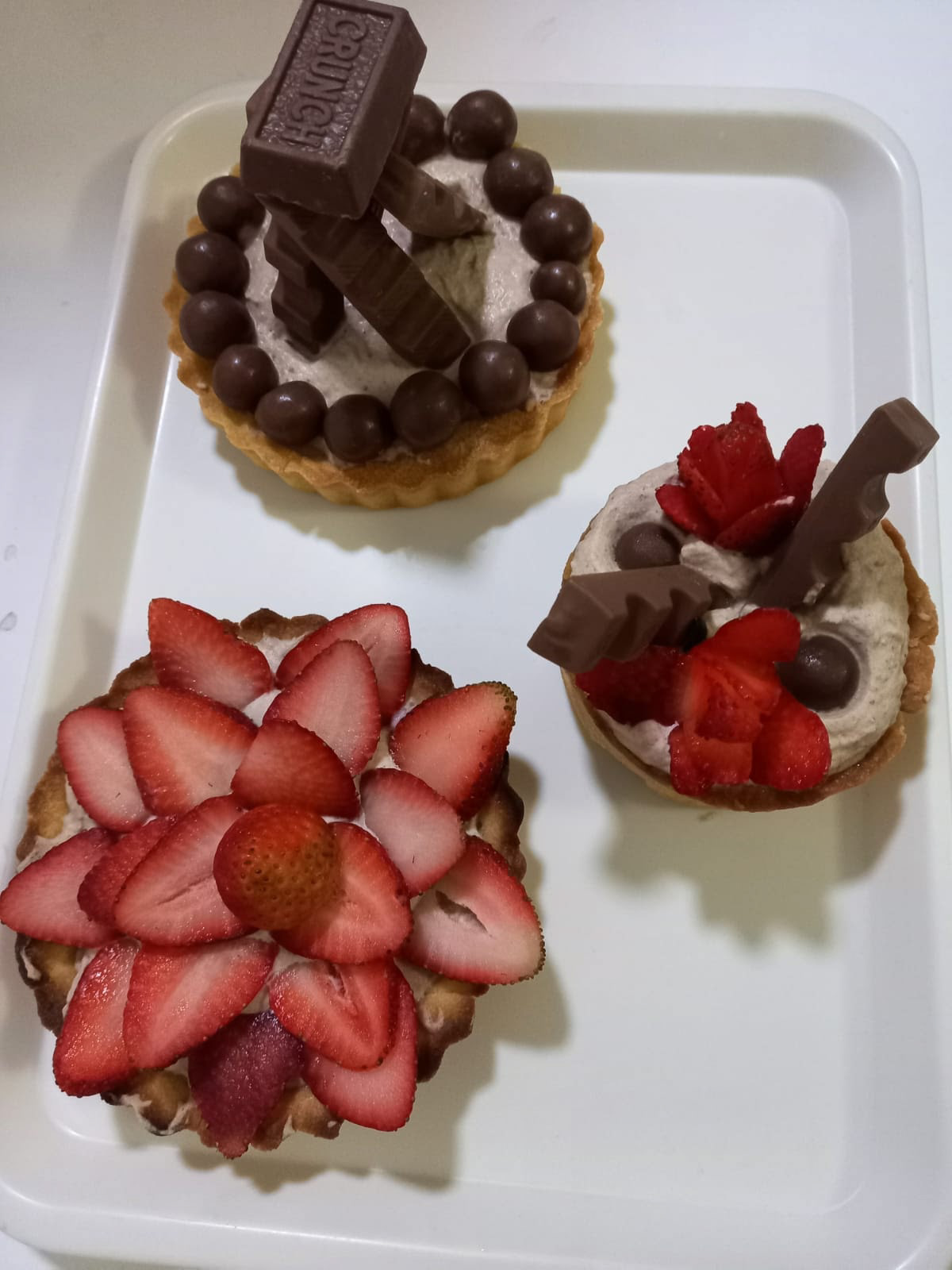
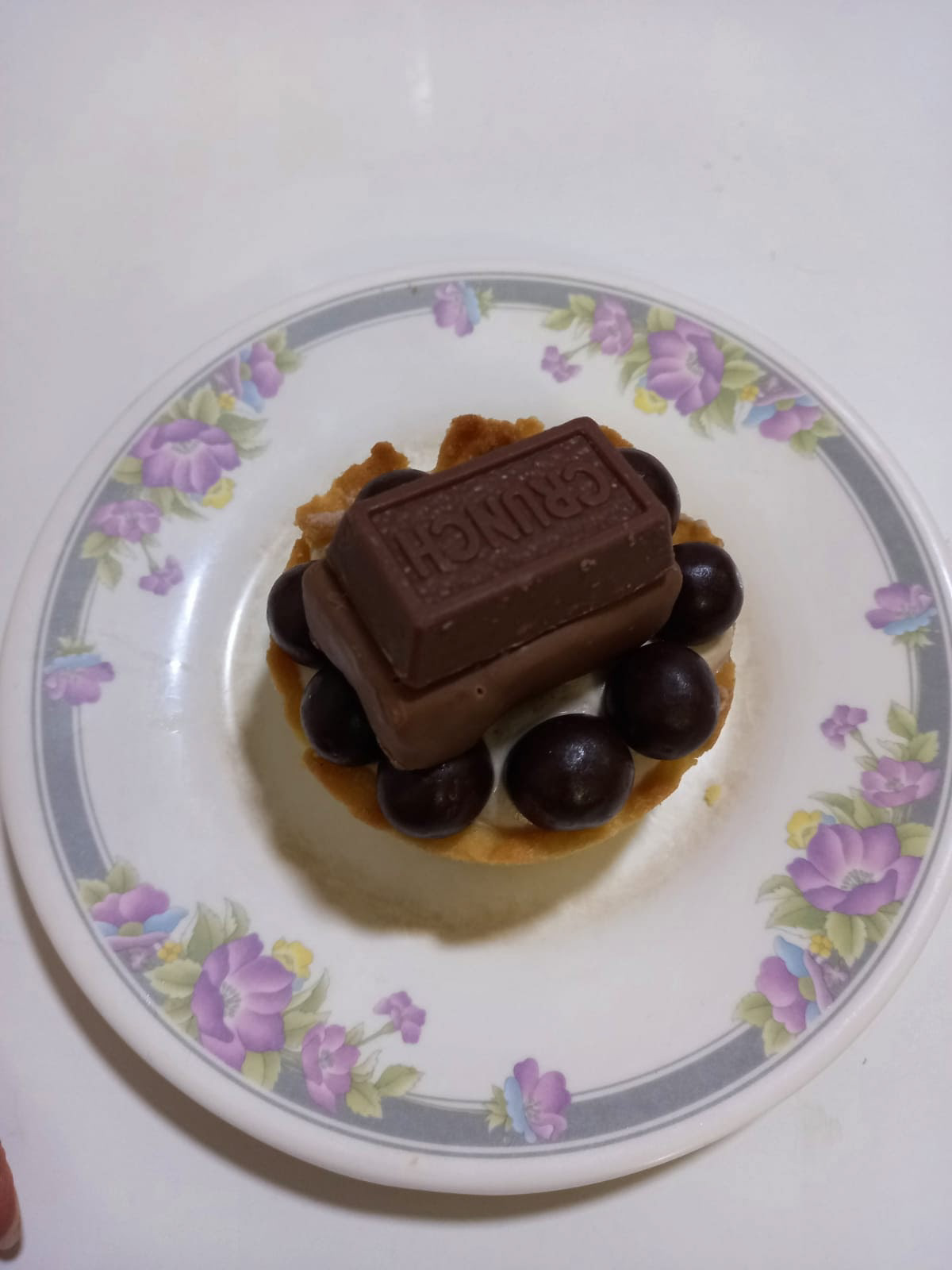
Findings from Observation
1. Kitchen Space Constraints
The mother of the family, Winnie, had shown us how to use space in the dining room as the working area and only got into the kitchen when putting the preparation into the oven or the stove.
2. Attractive Materials and Cooperative Learning
Both children were interested in filling the handbook. When the girl found the exercise challenging for her, the mother did not coach her directly but let her brother assist in completing the activity.
3. Learning Interest Related to Personality and Duration
The process took too long and the boy lost interest. The girl remained to do the activities with the mother and finished the dough. These situations show the diverse interests and learning styles in children.
4. Easy-to-implement and Tailored Recipe
The mother lacked experience in making desserts. She commented, ‘children expect parents and teachers to know what they are doing, recipes should therefore be easy to perform for parents tailored to their skill level. (e.g., dumplings for Chinese mothers).
5. The Use of Electronic Gadgets and Multimedia
Children nowadays were very familiar with finding additional information on the Internet. They googled how to get the vanilla extract from a vanilla bean. The daughter also commented that she would like to try a recipe that she saw on Youtube.
6. Meaningful Learning from Failure
Failure came in when whipping the cream and rolling the dough. The mother felt frustrated but also commented that “failure is not a problem; everyone will fail, and the essence is to try again and succeed next time.”
Findings from Post-interview
An interview was conducted for the mother, Winnie, and her two children after the workshop. Their insights provided us with new perspectives and directions for the project. The two children had different opinions about the workshop and materials: one positive and one negative. For mathematics, the boy was very good at it and found it very easy to work with the calculations while the girl was the opposite. She thus preferred activities like cooking that could help her learn in a different way. The booklet and the story were useful to warm up the children.
Children had a mindset that teachers and parents were always right and should not fail. The mother believed that her children could learn from their mistakes and should try multiple times until success. Children could learn that parents were also learning and that they could learn along with them.
Iteration and Testing
Second Prototyping
A second user test was conducted with another family to test our revised design concept and materials after the first prototyping. Compared with the early prototyping, only one child (Hazel, an 8-year-old girl) participated in the workshop with her grandmother. Dumplings other than Western desserts were featured in the recipe to tailor for Chinese grandparents. Other than interview questions, questionnaires, pre-and post- Mathematics tests were prepared to understand better the mood of participants and the change of mathematics ability of the children.



